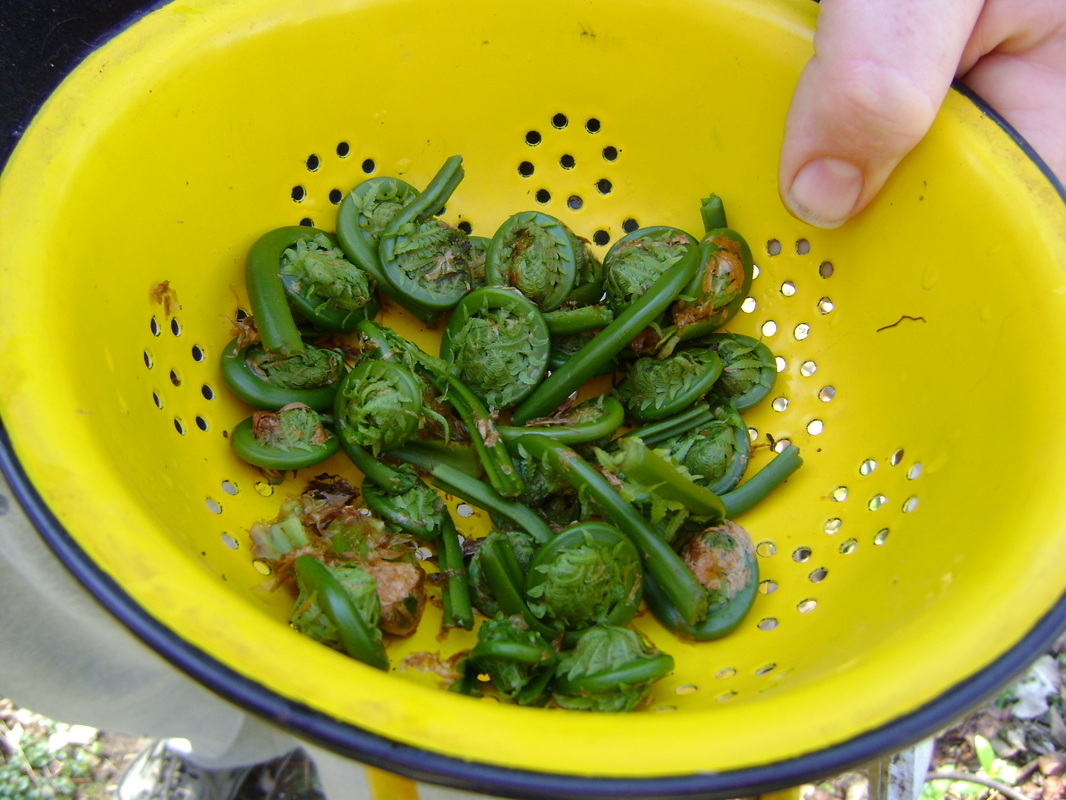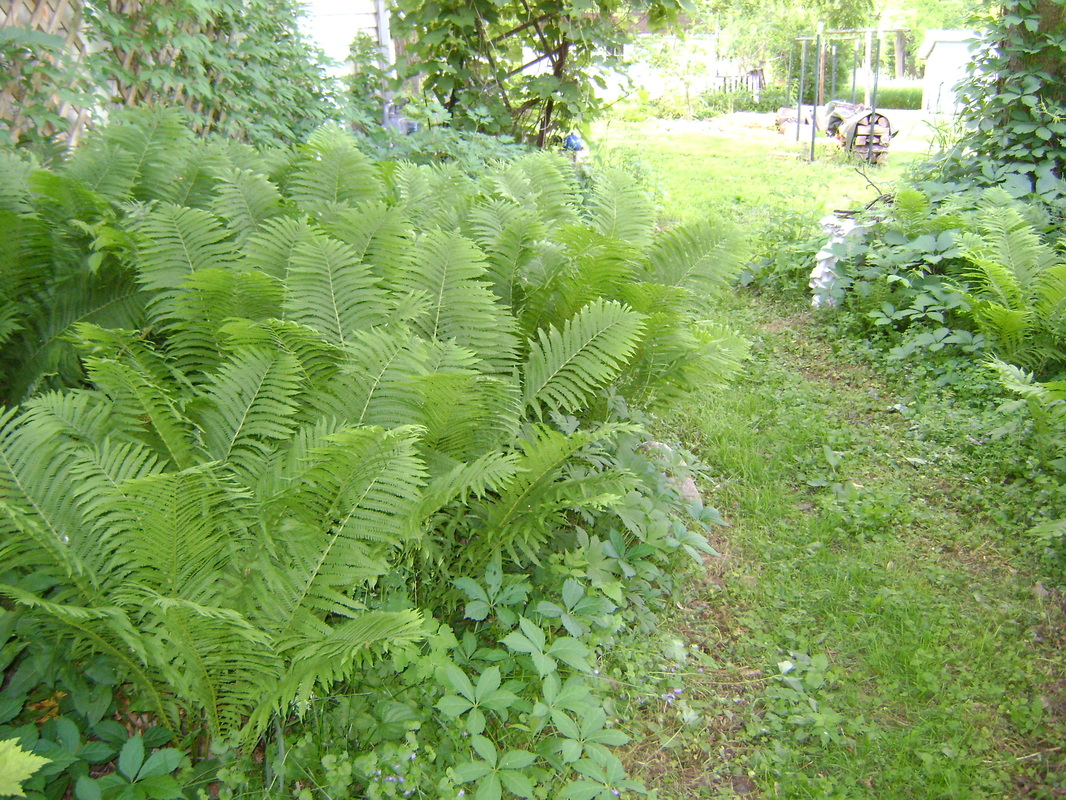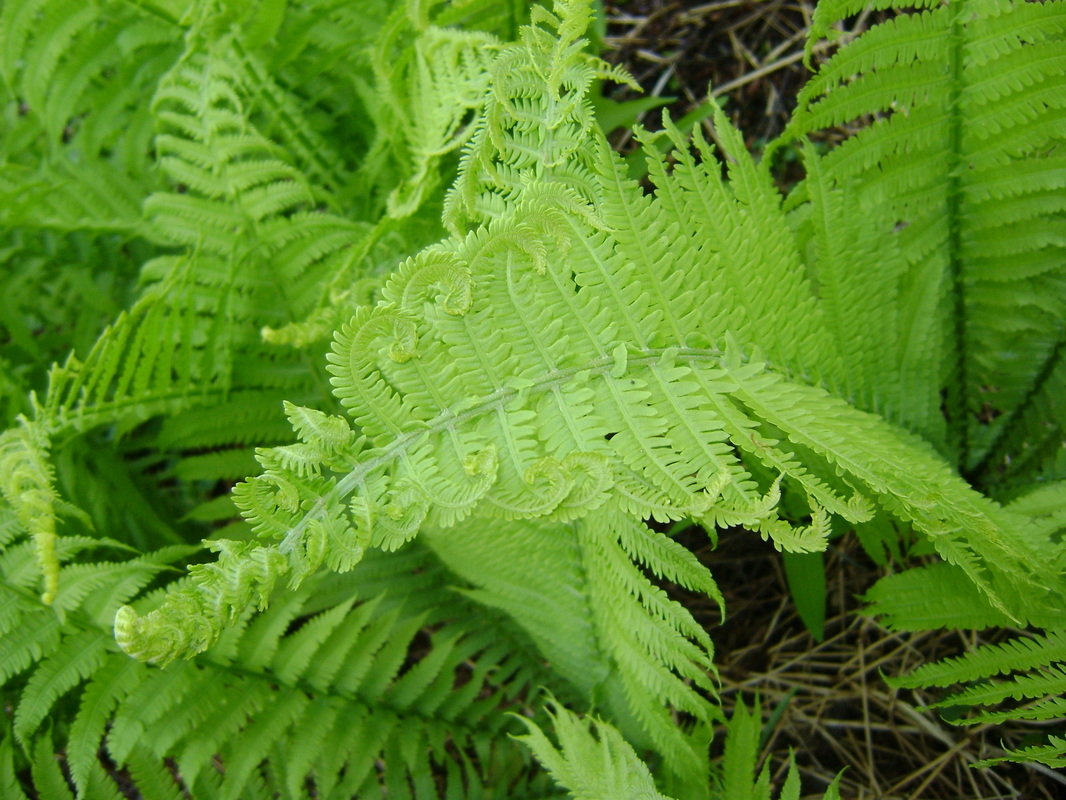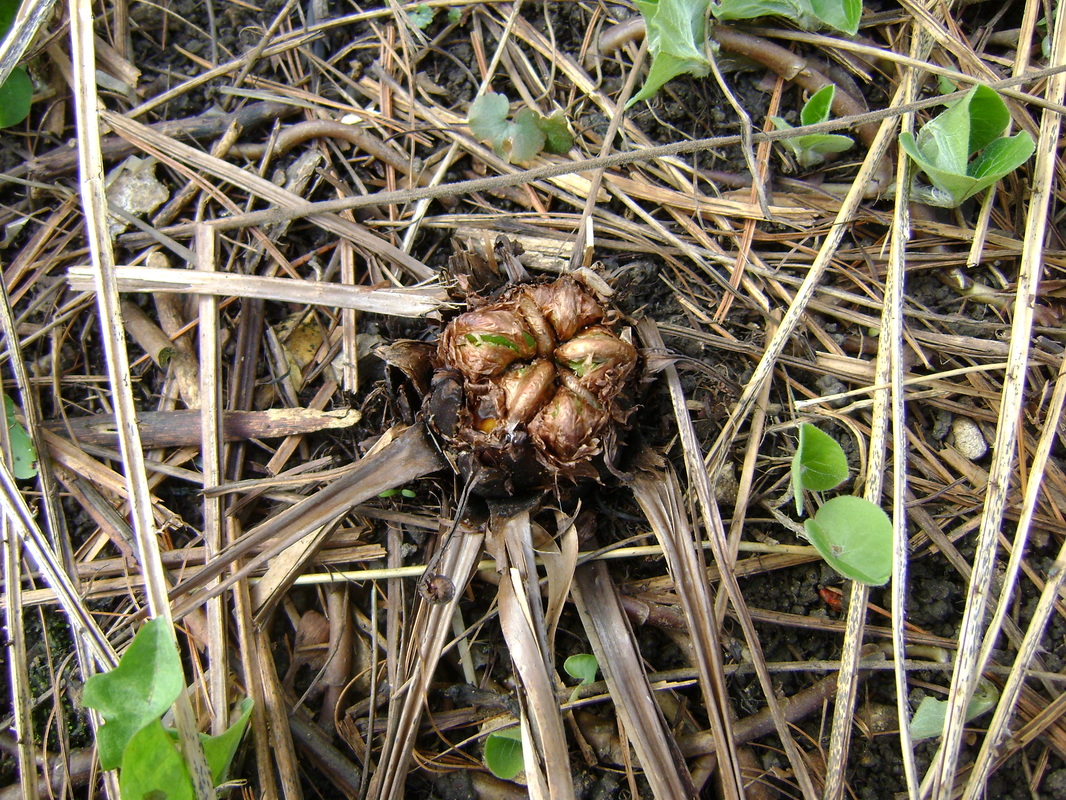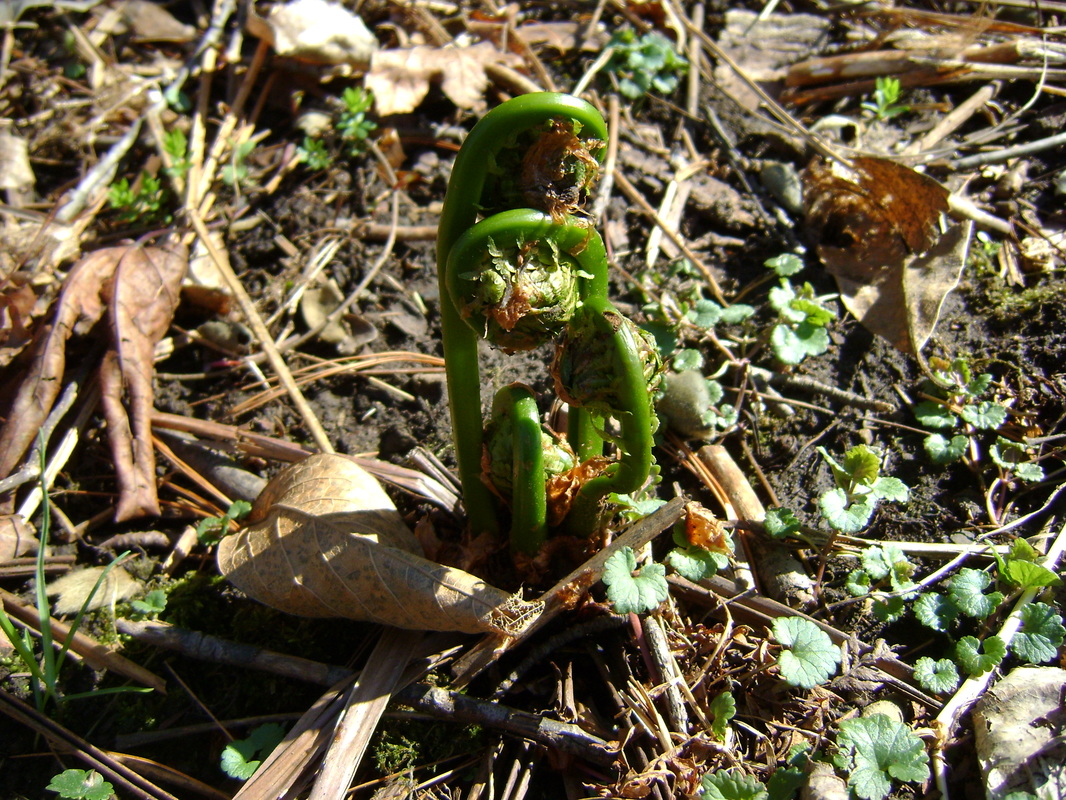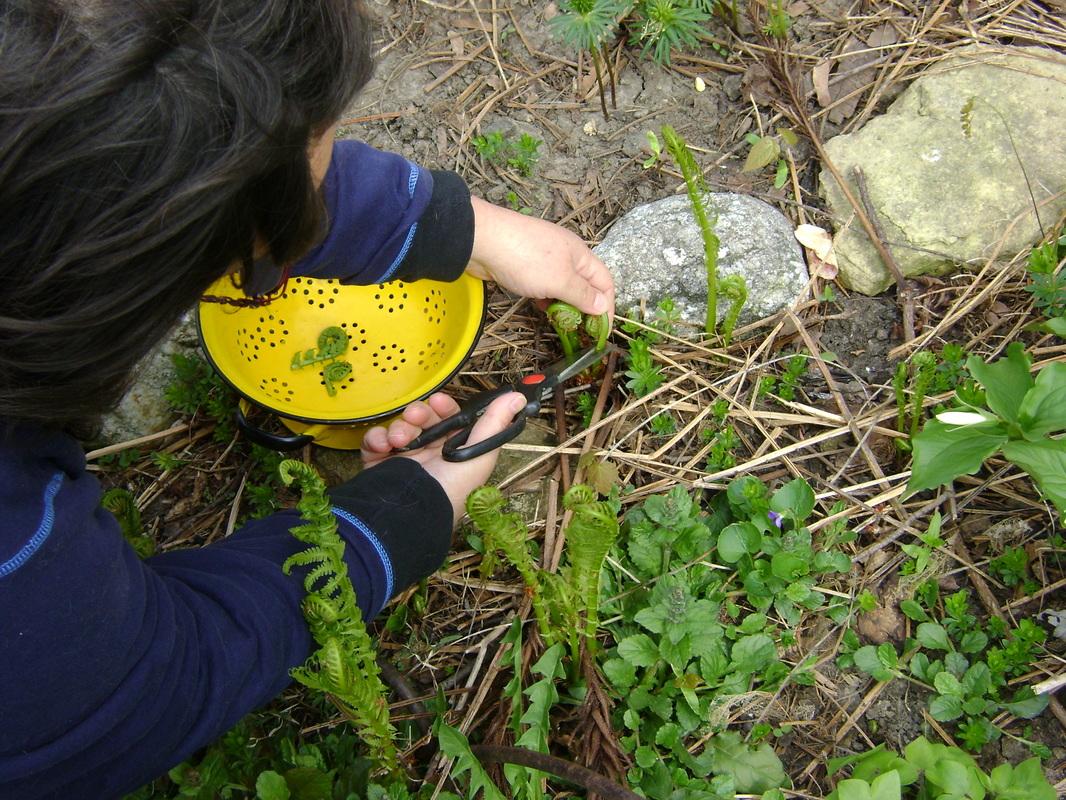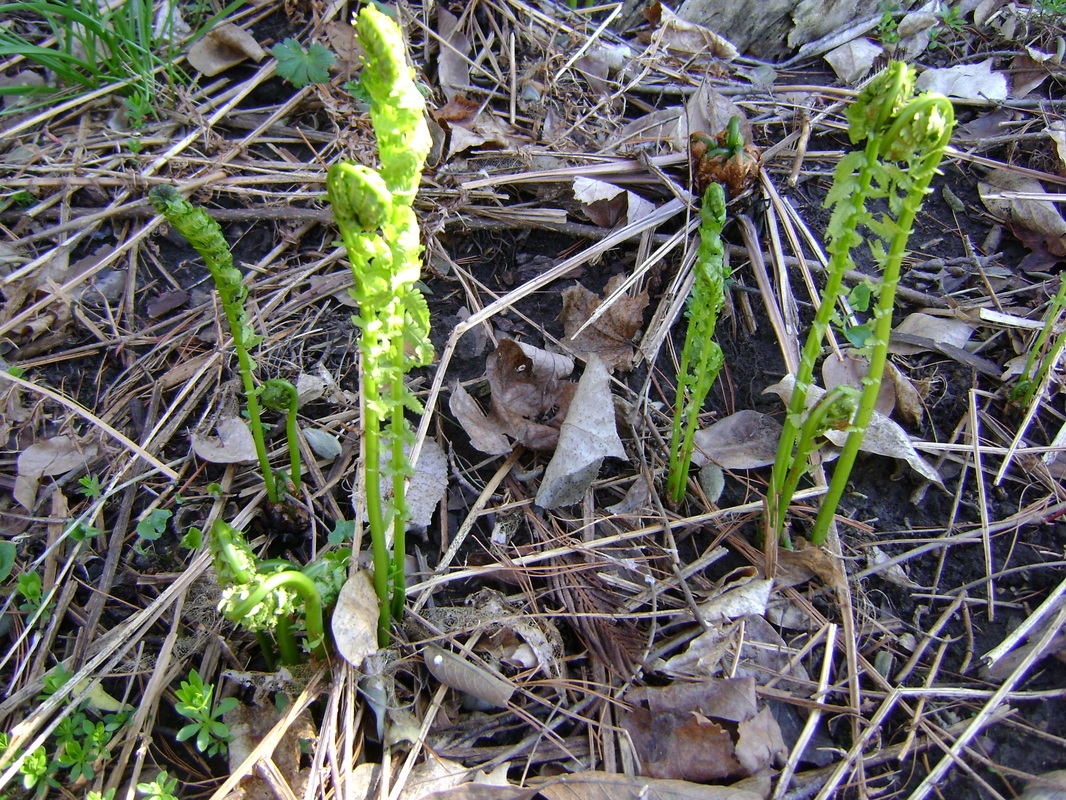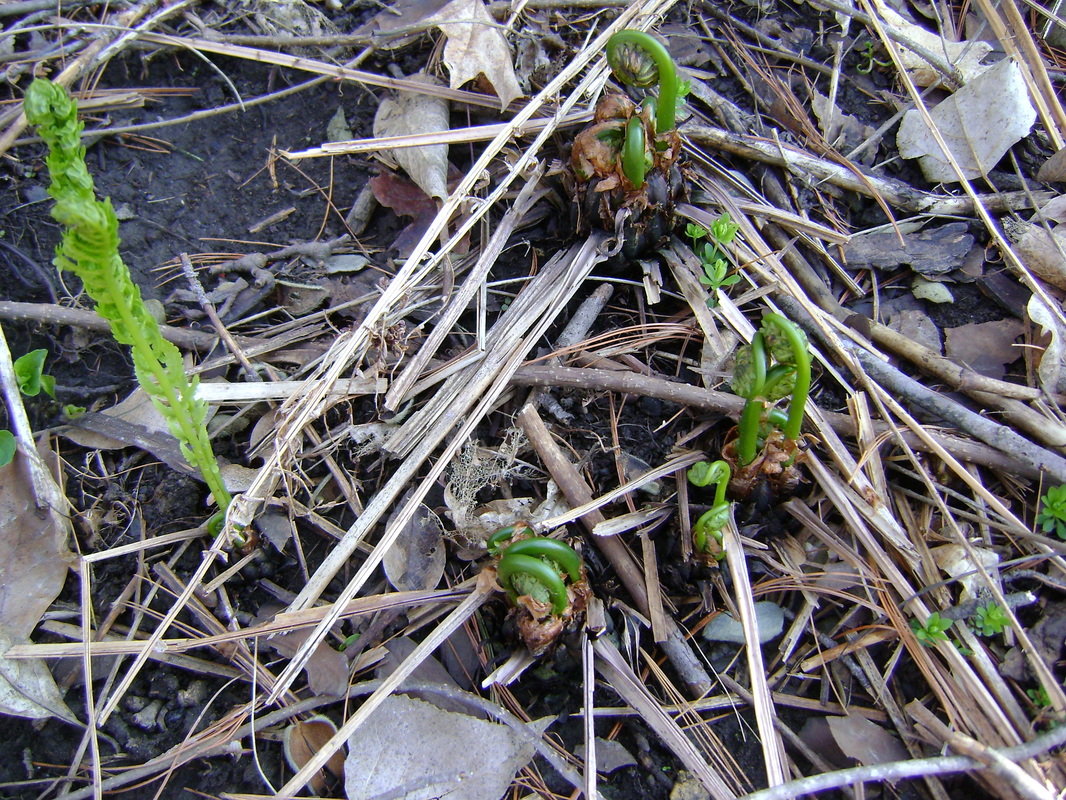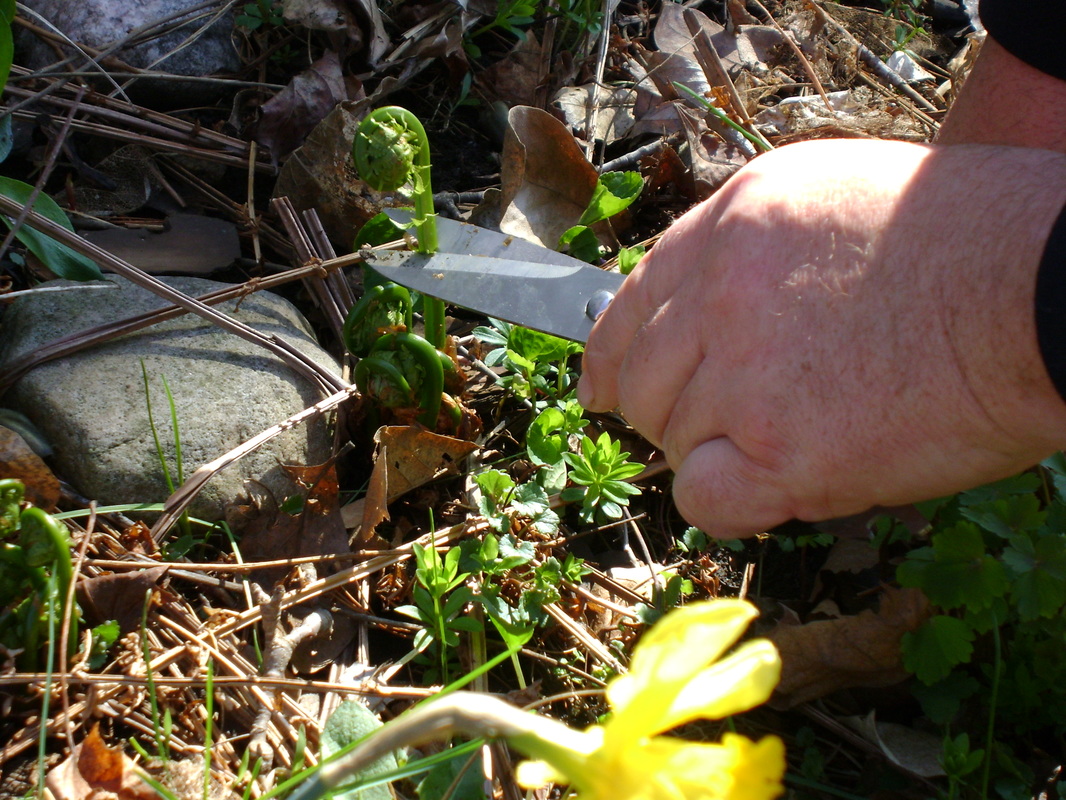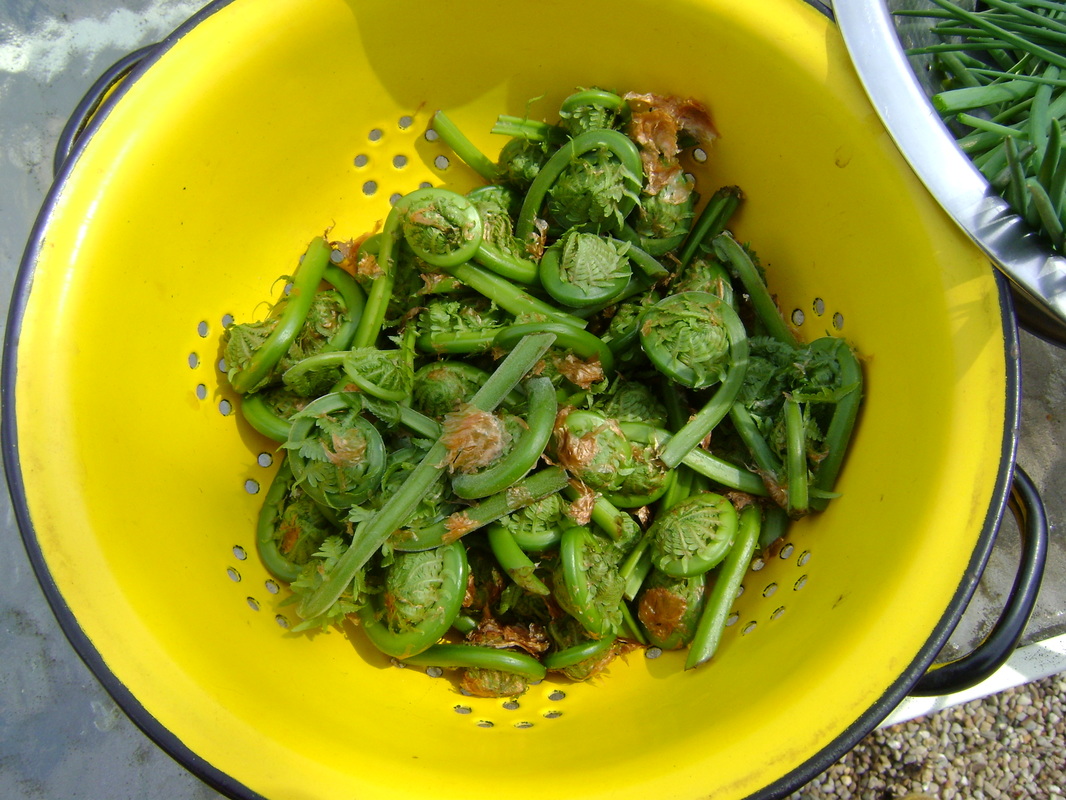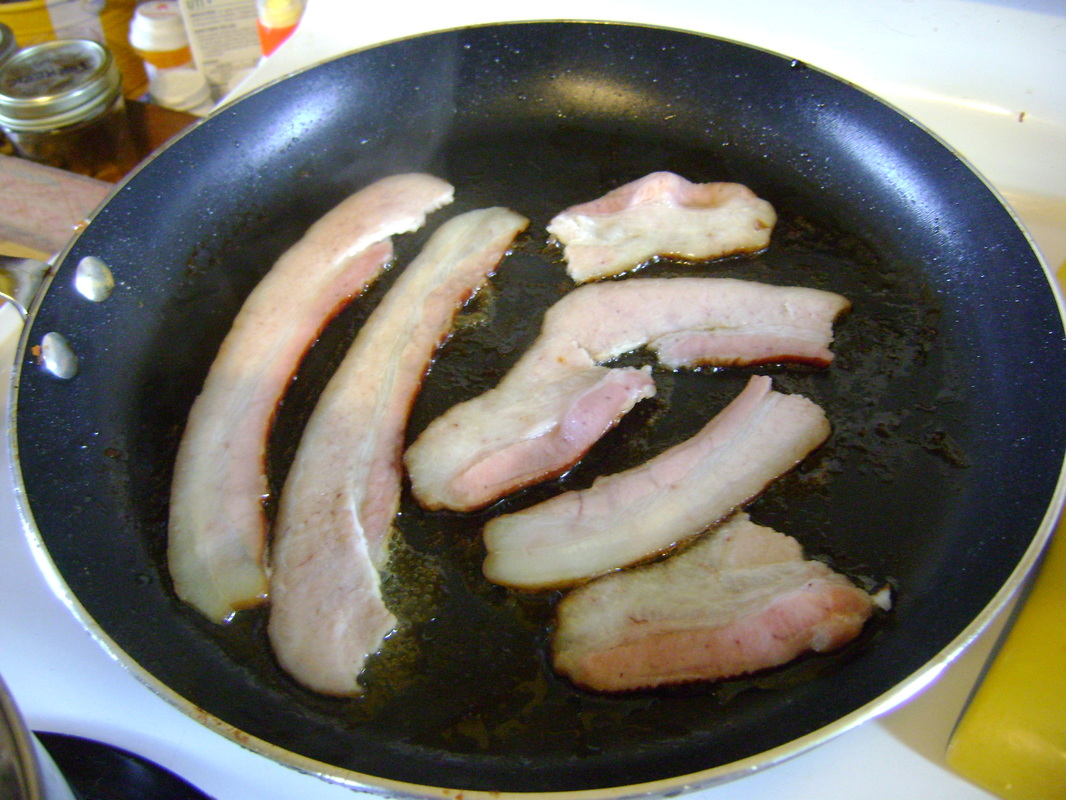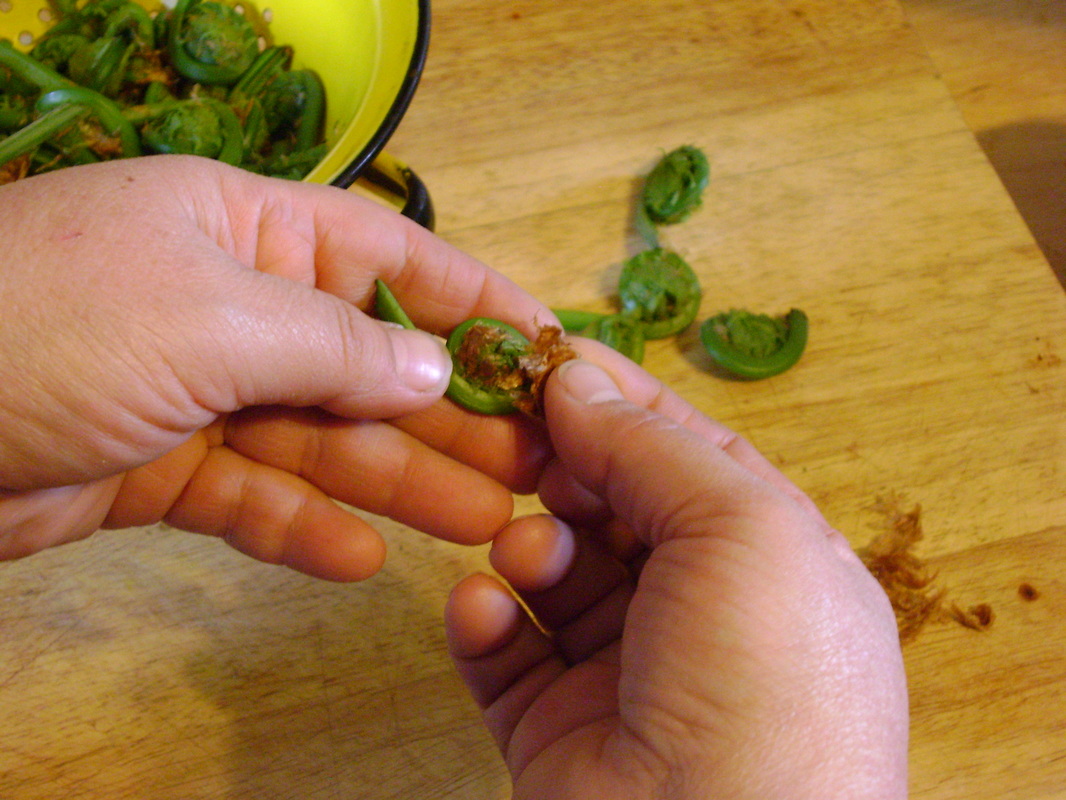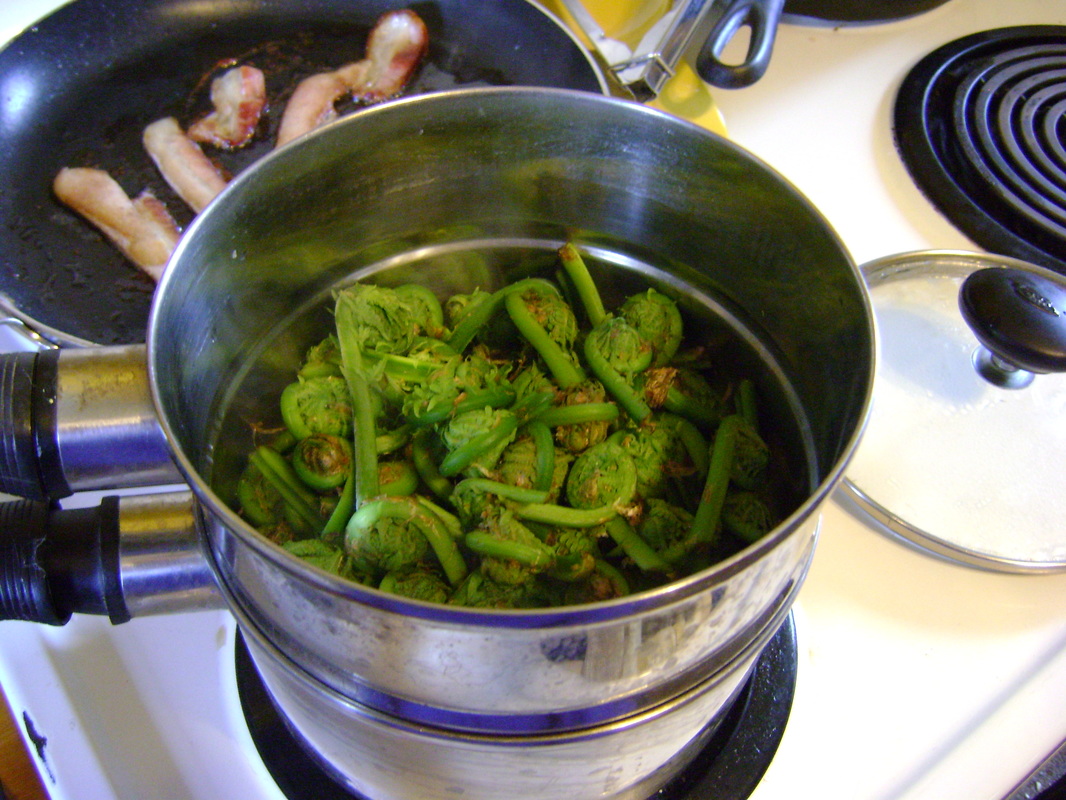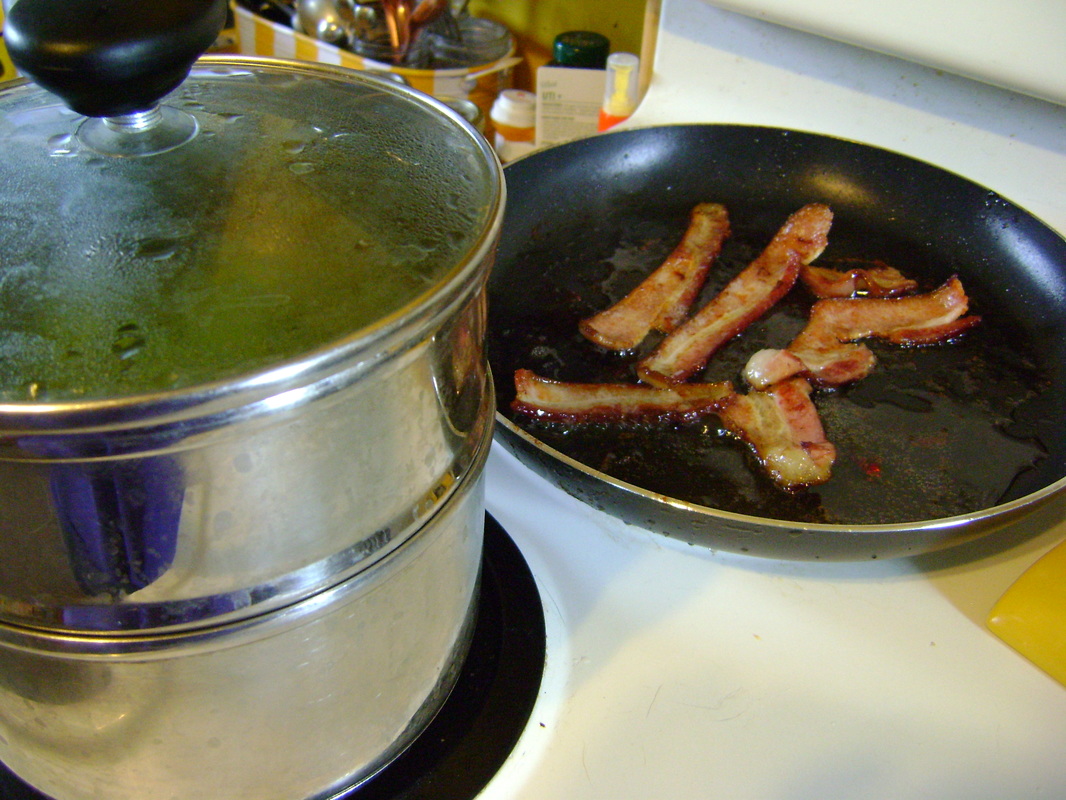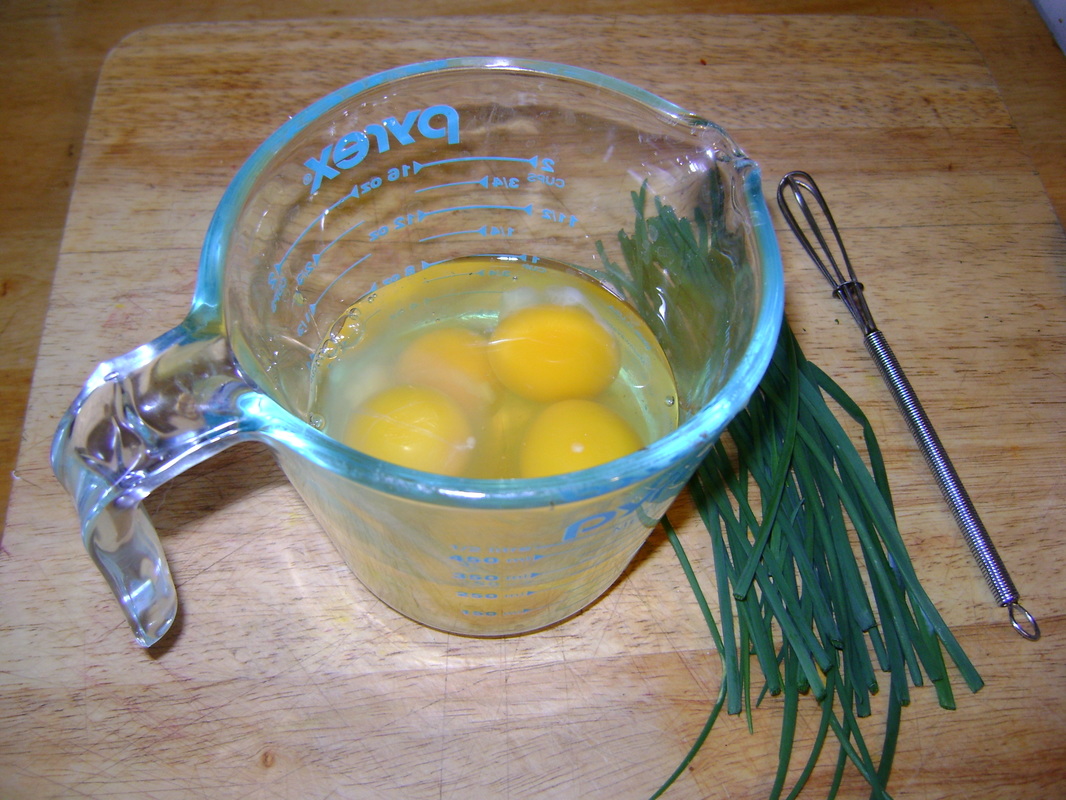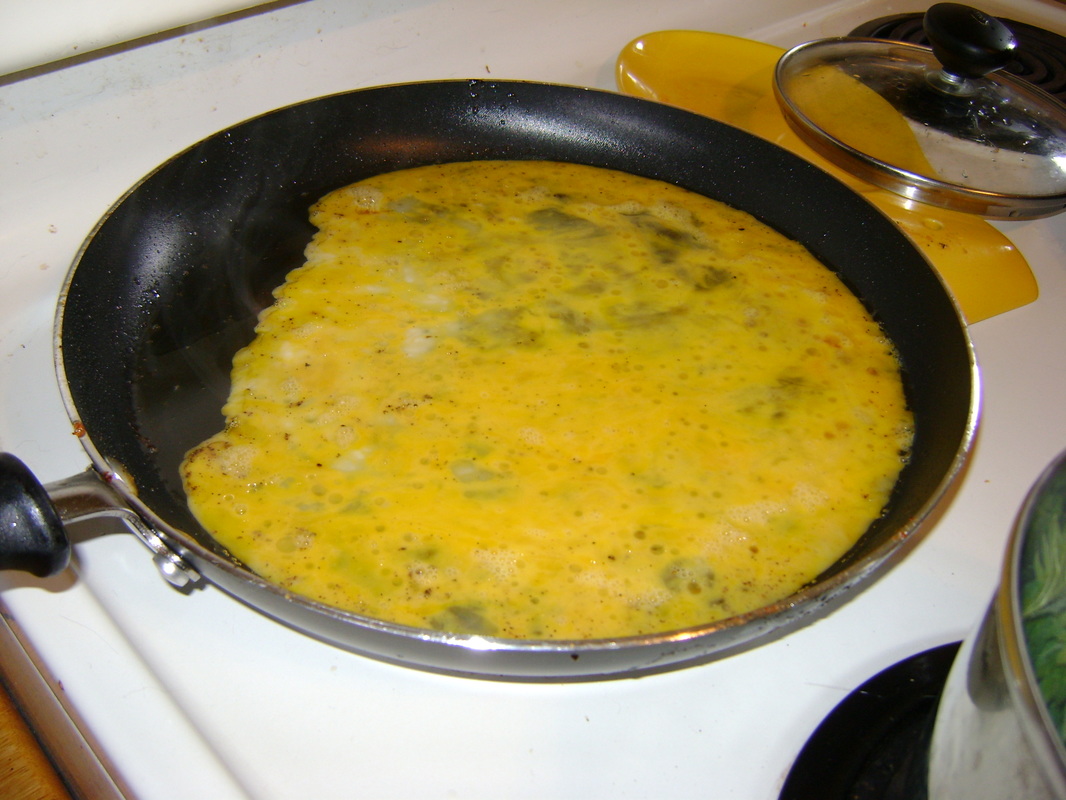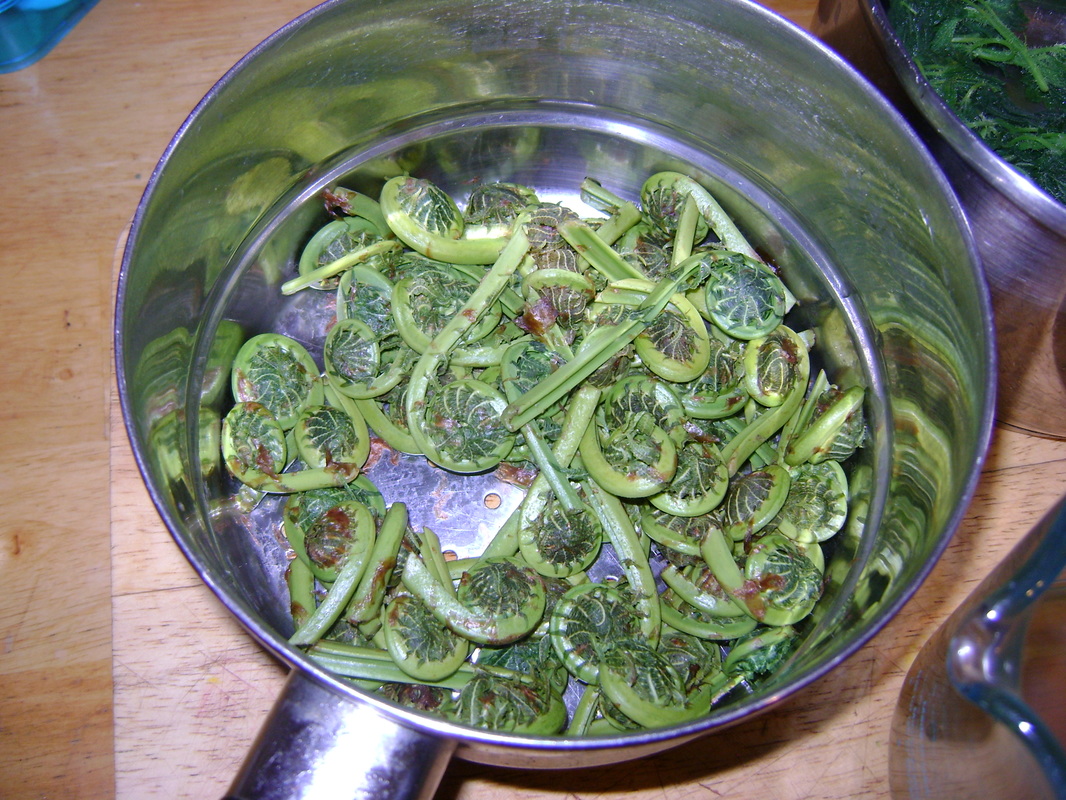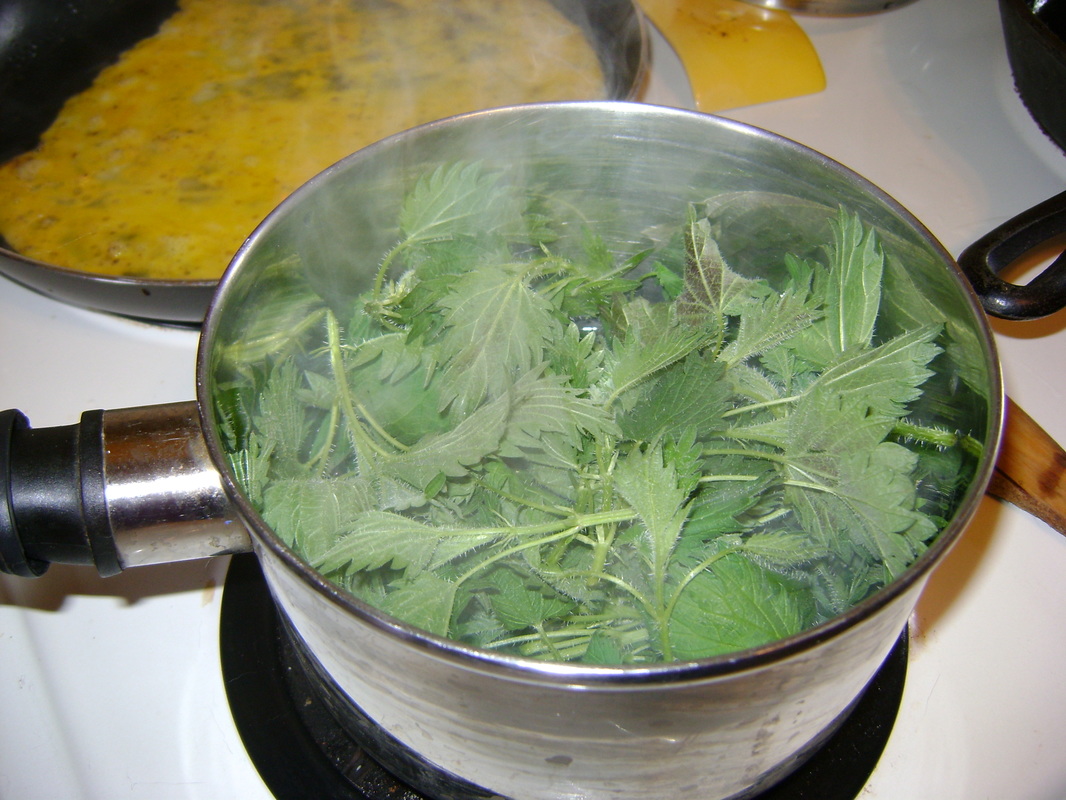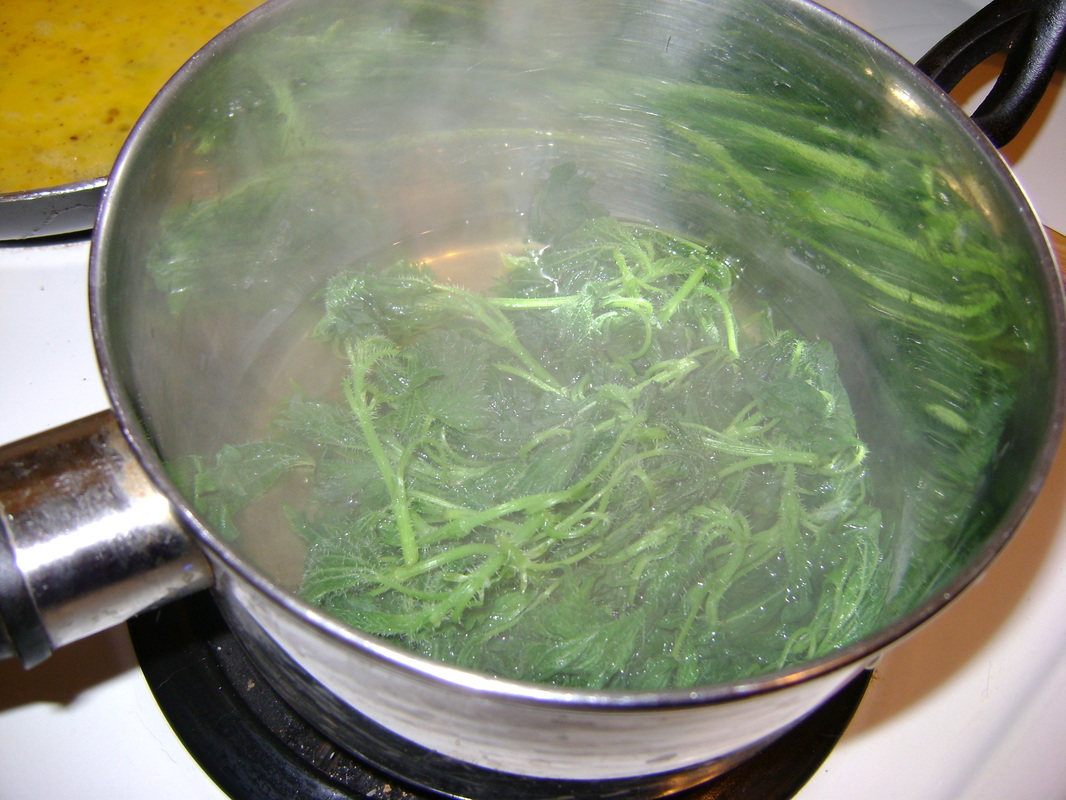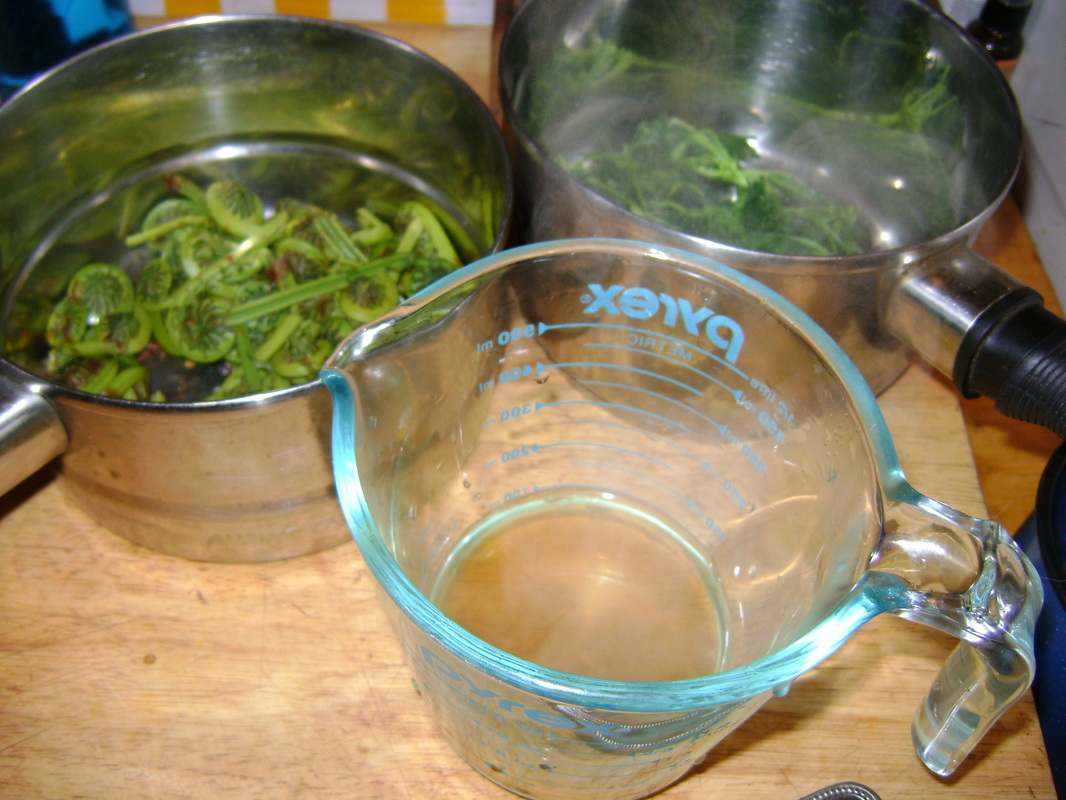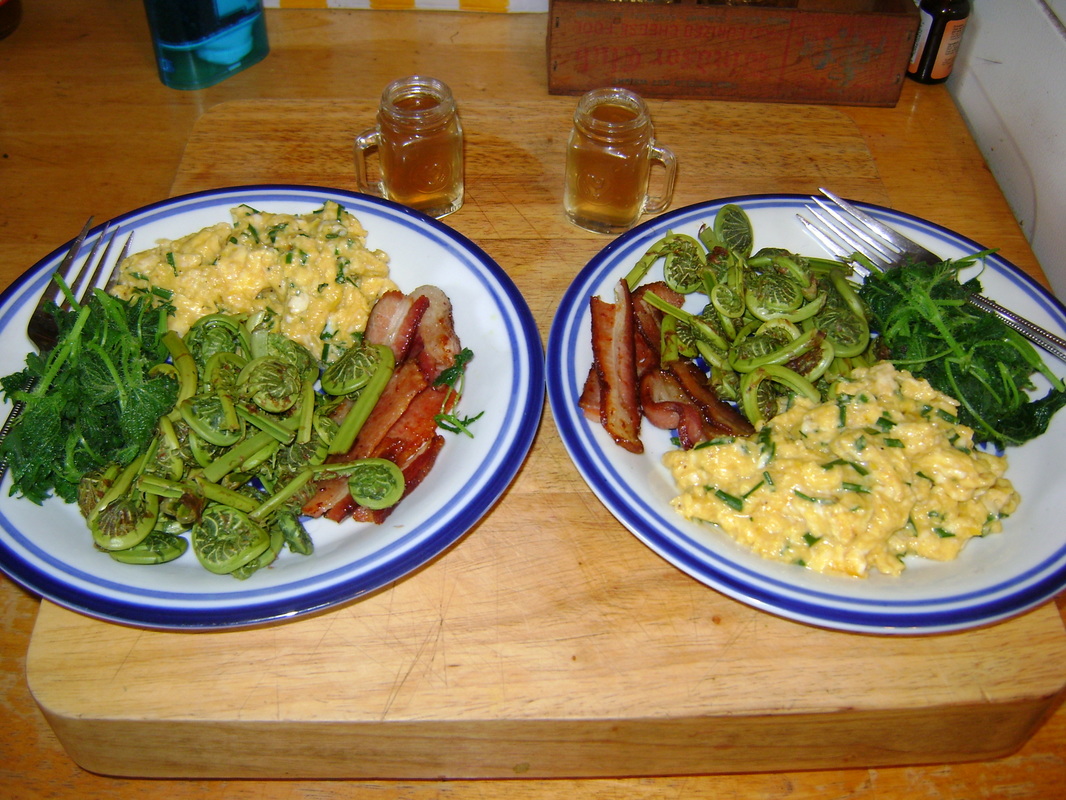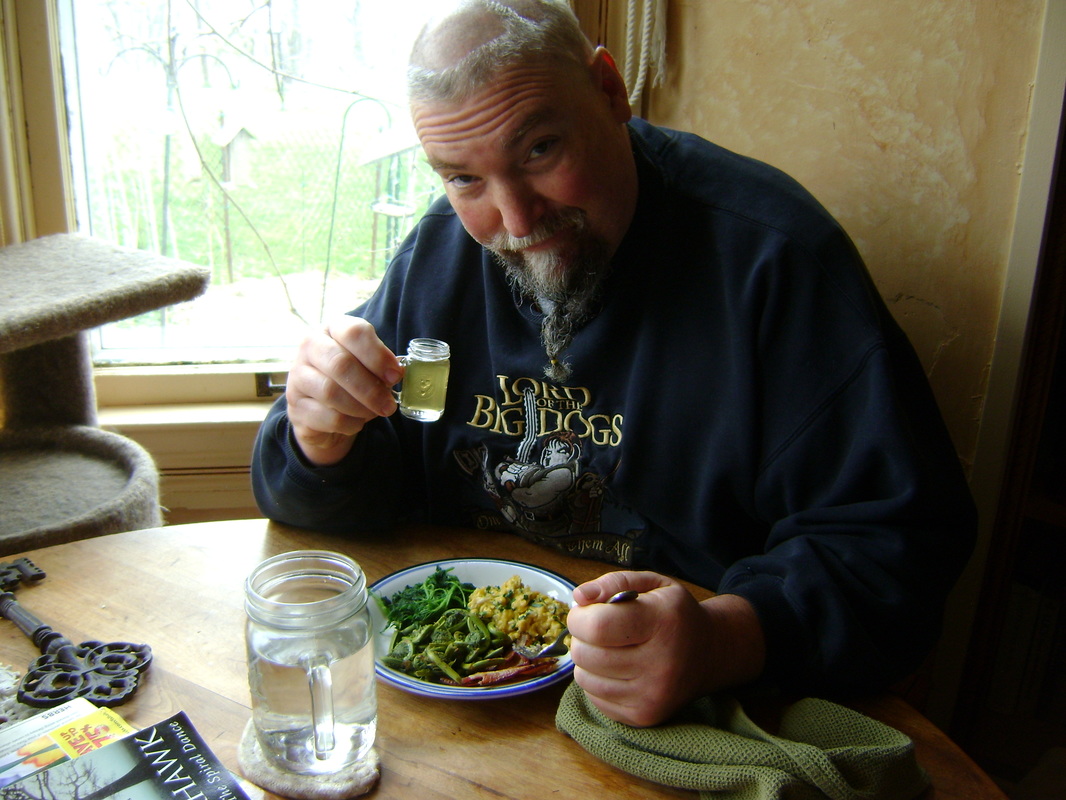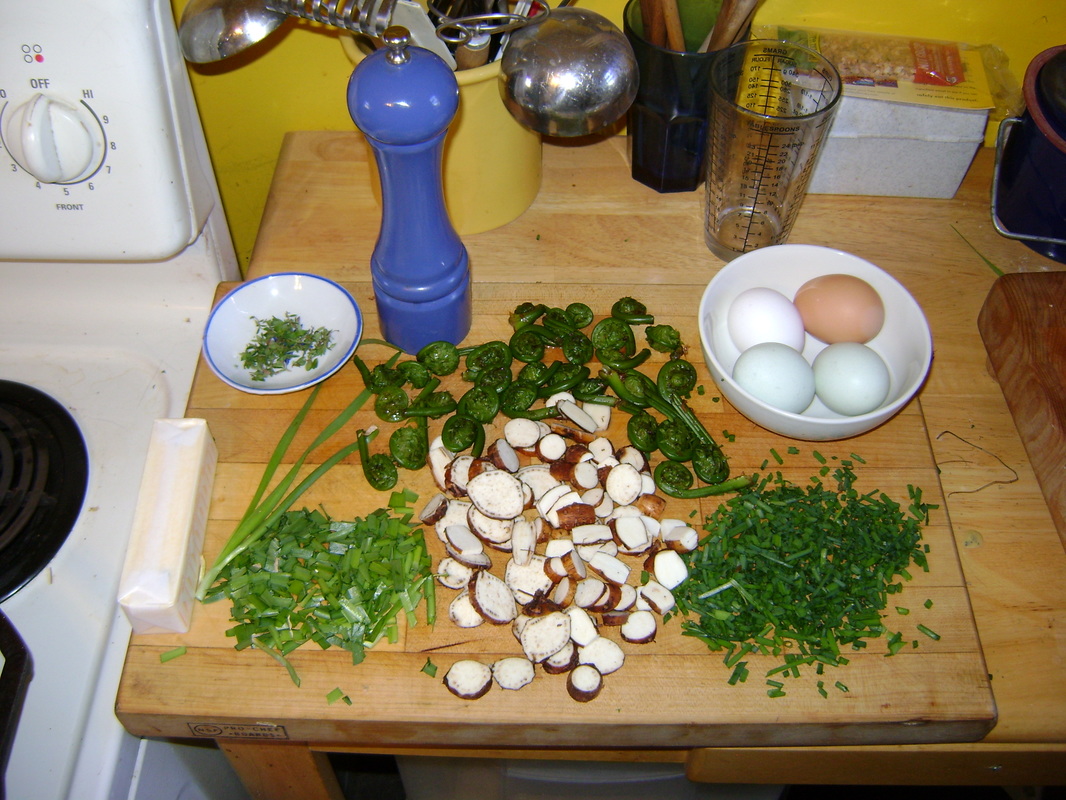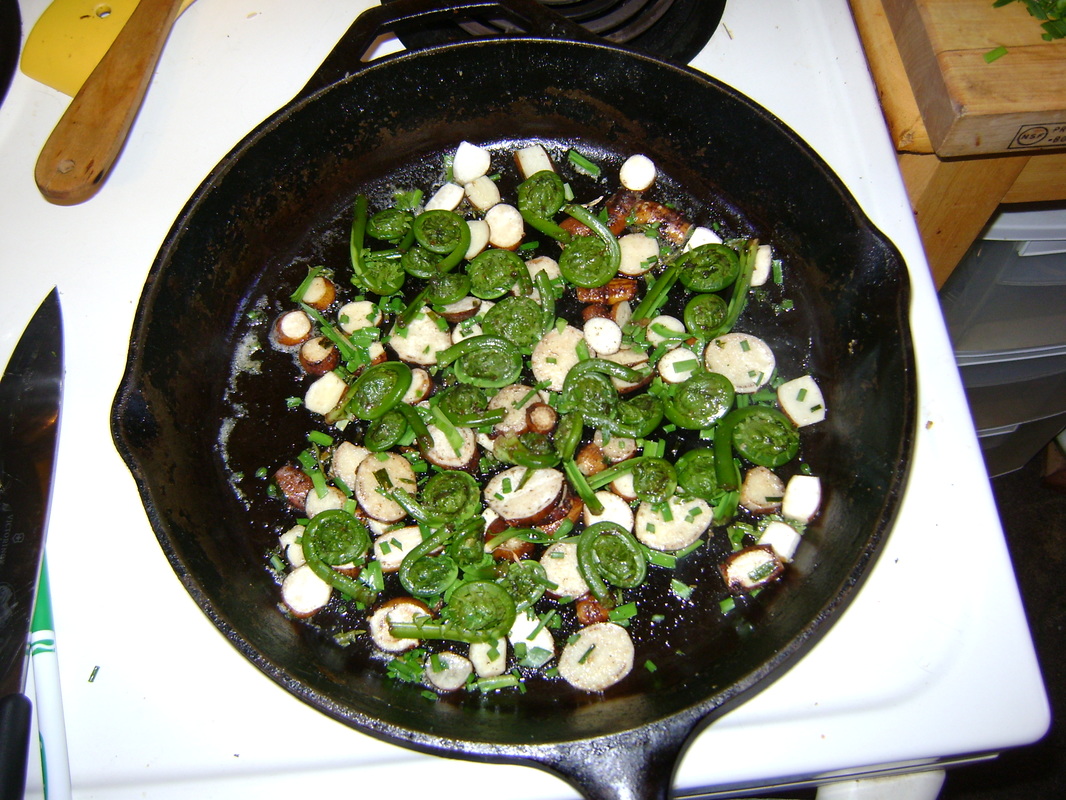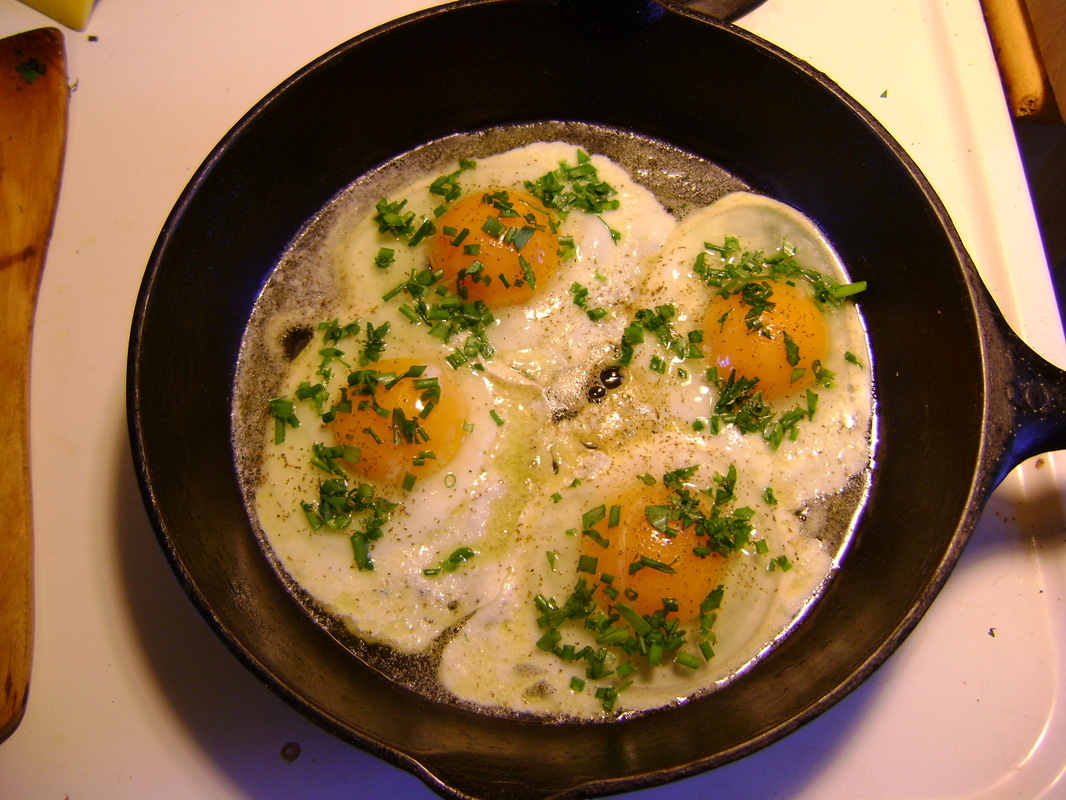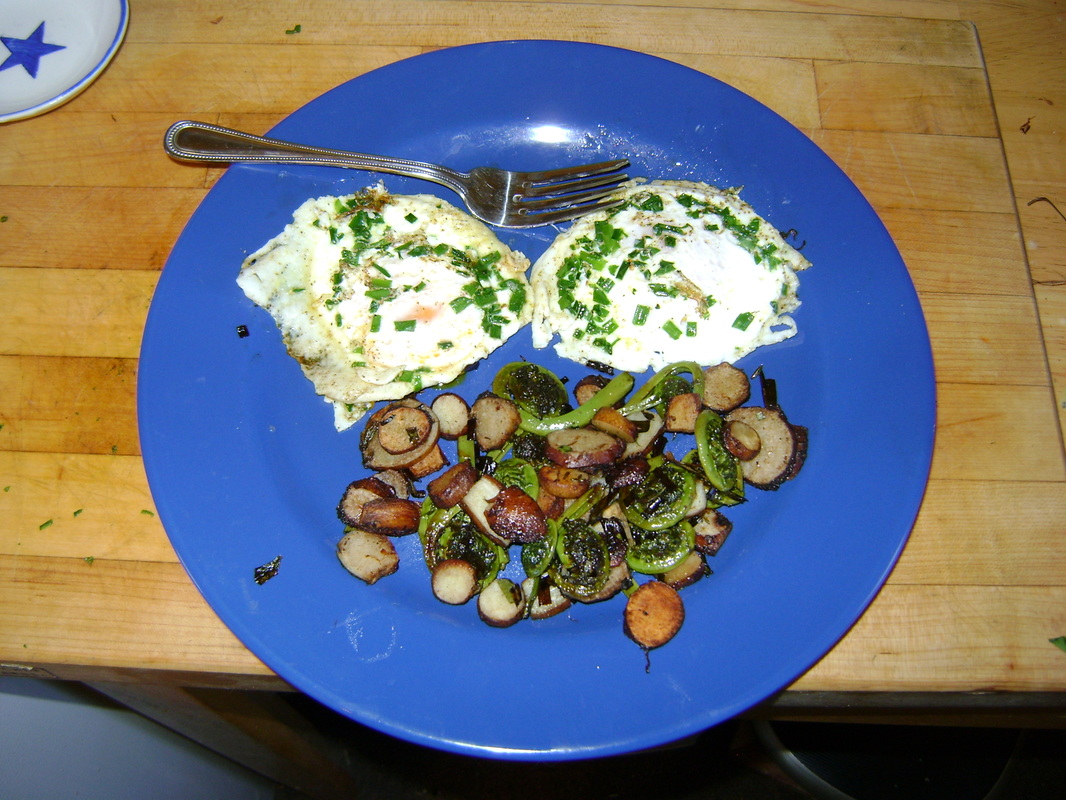EAT YOUR YARD:
|
How to Grow Ostrich Ferns:
|
Our stand of Ostrich Fern (on the left) growing in our
shady side yard. This photo was taken in June. |
A close up showing how beautiful ferns can be in your yard.
|
Below is what the ostrich fern looks like in early Spring before the leaves start to unfurl. The leaves are tightly curled at the base of the plant and they have a dry, brown, papery covering that drops off as the leaves grow.
How to Harvest Fiddleheads:
|
These dark brown stalks are the reproductive leaves of the fern that produce spores. Many will remain standing through the Winter, and you can find the edible fiddleheads emerging between them in the Spring.
|
Harvest fiddleheads with a pair of scissors:
|
The photo below shows fiddleheads that have gotten too tall for harvesting- they would be too tough to be tasty:
|
This photo shows that ostrich fern plant seems to mature differently. On the left are older ones too tall to eat, while the ones on the right are ready to harvest. This differing rate of maturation can make it difficult to find a meal's worth of fiddleheads at the same time in a tiny yard.
|
How to Eat Fiddleheads:
|
Steamed Fiddleheads with Scrambled Eggs, Bacon, and Nettle
Here's a recipe that uses three plants that are ready to harvest in early Spring: fiddleheads, nettle, and chives.
|
11. They will wilt quickly...
(For more information about harvesting and eating nettle, see our Nettle page.) |
12. Drain out the boiling water, but not down the sink! Save it and drink it with your breakfast, it tastes amazing. I've poured it into the measuring cup below.
|
13. Now it's ready to eat. We kept the fiddleheads and nettle in separate piles so we could enjoy their flavor alone, or they also taste great with a bite of eggs or bacon. We put our nettle water into tiny shot glasses...
Bear says "Bon Appetite!"
And here's another cooking suggestion from Bear: Fiddleheads & Groundnuts
|
1. Harvest all of your Spring ingredients: fiddleheads, groundnuts, chives, thyme, eggs from the neighbor's chickens.
(For more information, see our page on eating groundnuts.) |
2. Saute the fiddleheads with ground nuts and fresh thyme. (You could also substitute potatoes for the groundnuts, but they take longer to cook, so start them early and add the fiddleheads at the end.)
|
